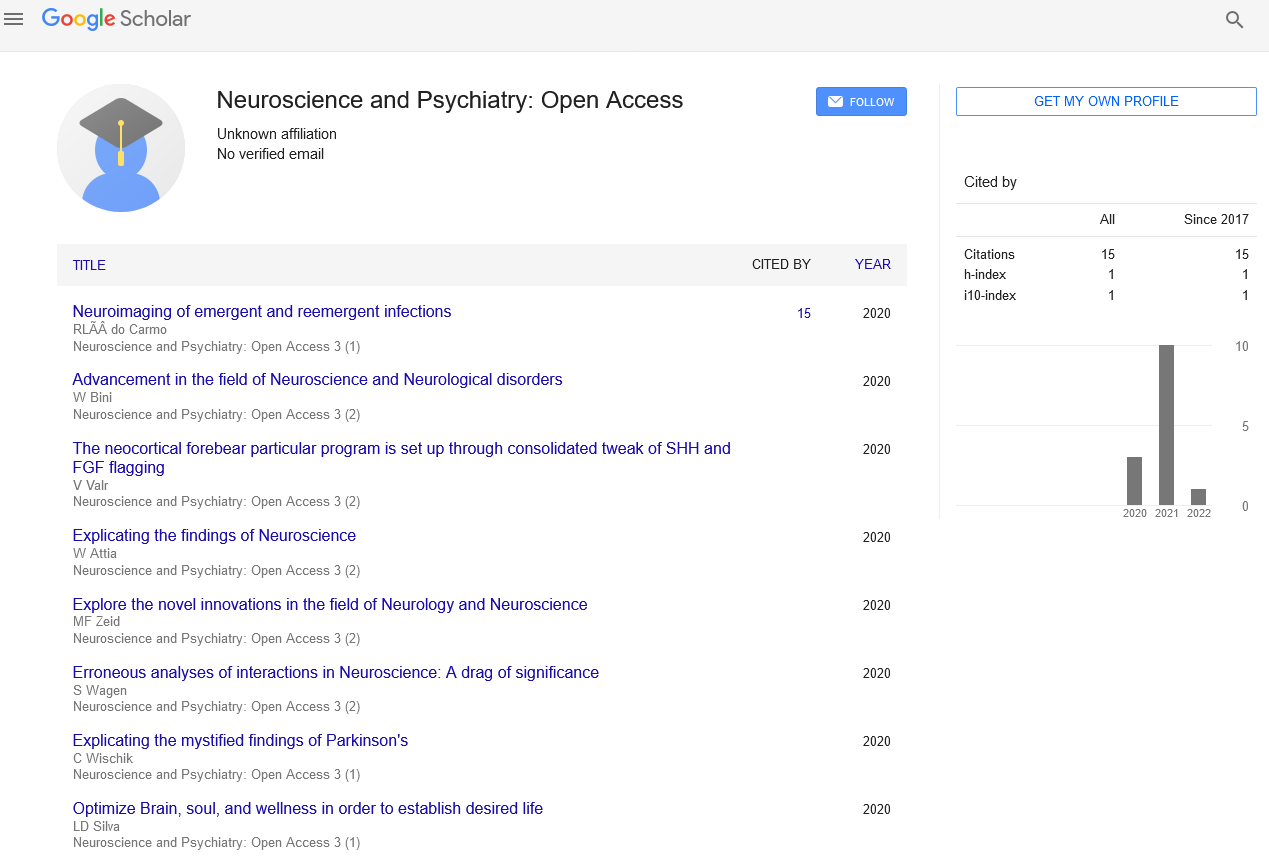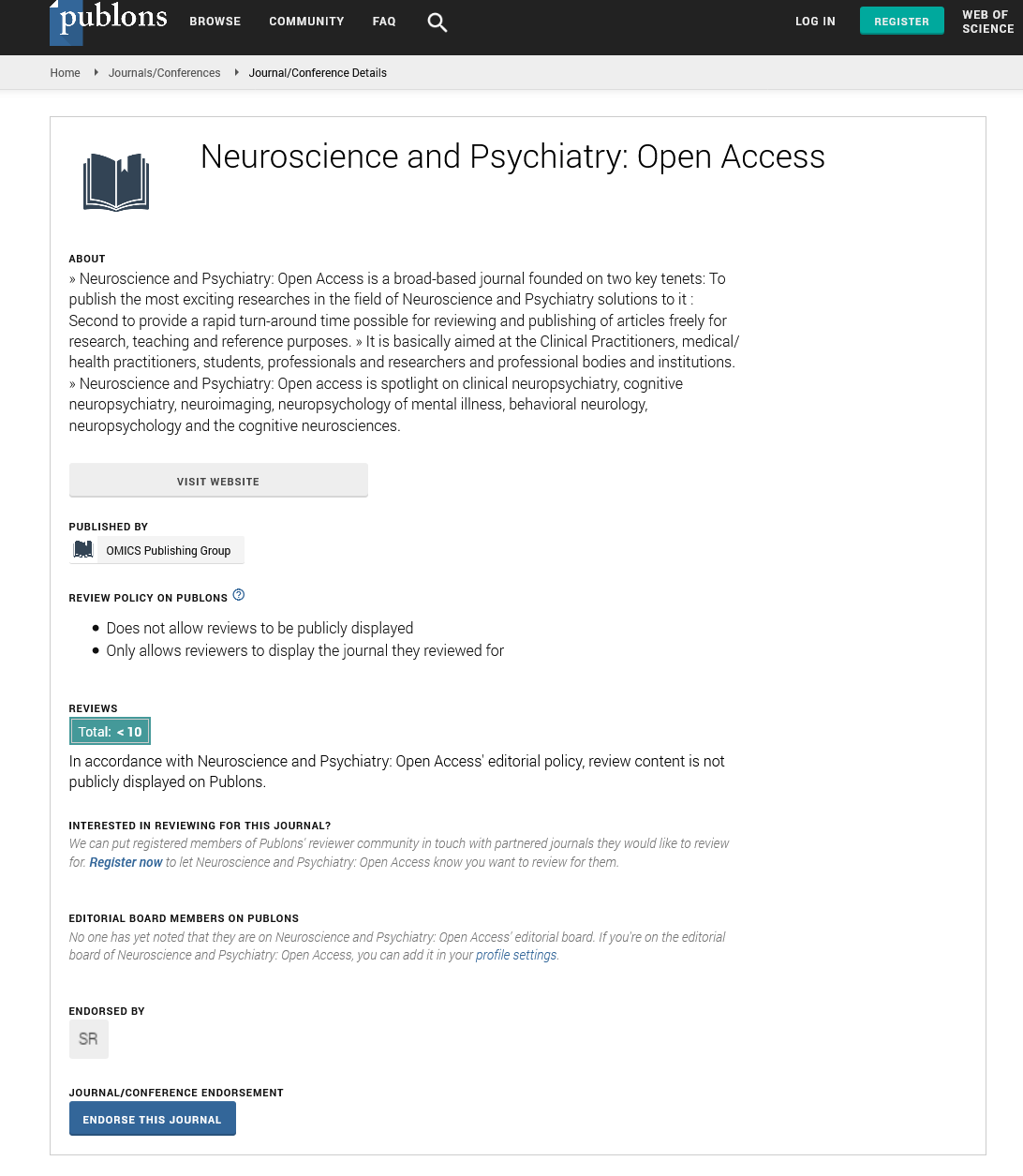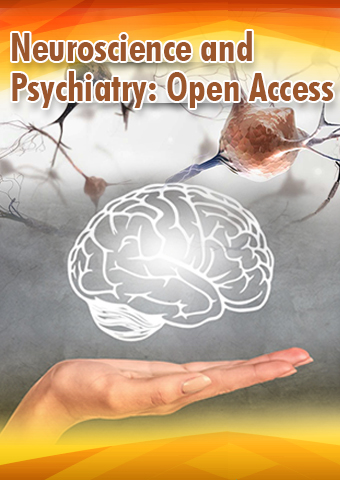Perspective - Neuroscience and Psychiatry: Open Access (2024) Volume 7, Issue 4
Bridging Minds: Exploring the Synapse in Neuroscience and Psychiatry
- Corresponding Author:
- Timo Faustmann
Department of Neuromorphology, Max- Planck-Institute for Psychiatry, Martinsried, Germany
E-mail: timo.faust1@uni-duesseldorf.de
Received: 18-06-2024, Manuscript No. NPOA-24-133871; Editor assigned: 21-06-2024, PreQC No. NPOA-24-133871 (PQ); Reviewed: 05-07-2024, QC No. NPOA-24-133871; Revised: 15-07-2024, Manuscript No. NPOA-24-133871 (R); Published: 22-07-2024, DOI: 10.47532/npoa.2024.7(4).227-229
Introduction
The synapse, a microscopic junction between neurons, serves as the focal point of communication in the nervous system, orchestrating neural signaling, information processing, and synaptic plasticity that underlie cognition, emotion, behavior, and neurological disorders. In this comprehensive exploration, we delve into the intricacies of the synapse, unraveling its structure, function, molecular mechanisms, role in neural circuits, and implications for understanding brain health and psychiatric conditions within the realms of neuroscience and psychiatry.
Description
Understanding the synapse: An interface of connectivity
The synapse embodies a complex interface where neuronal connections are established, maintained, and modulated, enabling the transmission of electrical and chemical signals between neurons. Synapses can be classified into two main types: Electrical synapses, characterized by direct electrical coupling via gap junctions that allow rapid signal transmission, and chemical synapses, mediated by neurotransmitter release and receptor activation.
Chemical synapses, the predominant form of synaptic communication in the brain, consist of presynaptic terminals (axon terminals), synaptic clefts, and postsynaptic receptors (on dendrites or cell bodies). Neurotransmitters, released from synaptic vesicles in the presynaptic terminal, diffuse across the synaptic cleft and bind to specific receptors on the postsynaptic membrane, initiating excitatory or inhibitory responses in the postsynaptic neuron.
Structural complexity of synapses: Morphological variations and ultrastructural features
Synapses exhibit structural diversity and organization across brain regions, neuronal types, and developmental stages, reflecting functional specialization, synaptic strength, and plasticity mechanisms. Excitatory synapses, typified by glutamatergic transmission, feature asymmetric morphology with prominent Postsynaptic Densities (PSDs) enriched in glutamate receptors (e.g., AMPA receptors, NMDA receptors).
Inhibitory synapses, characterized by GABAergic or glycinergic transmission, display symmetric morphology with smaller PSDs and distinct neurotransmitter receptors (e.g., GABA-A receptors, glycine receptors). Ultrastructural studies, such as Electron Microscopy (EM), reveal synaptic vesicles, synaptic cleft dimensions, synaptic membrane specializations, and cytoskeletal elements (e.g., actin filaments, microtubules) involved in synaptic structure and function.
Neurotransmission at the synapse: Molecular machinery and signal transduction
Neurotransmitter release and synaptic transmission at chemical synapses involve a precise orchestration of molecular machinery, calcium signaling, vesicle fusion, and postsynaptic receptor activation. Action potentials, propagated along axons, reach presynaptic terminals and trigger calcium influx through Voltage-Gated Calcium Channels (VGCCs), initiating neurotransmitter release from synaptic vesicles via exocytosis.
Neurotransmitters, such as glutamate (excitatory) or GABA (inhibitory), bind to postsynaptic receptors, leading to depolarization (excitatory) or hyperpolarization (inhibitory) of the postsynaptic membrane. Ionotropic receptors, directly coupled to ion channels, mediate fast synaptic transmission, while metabotropic receptors, linked to intracellular signaling cascades, modulate slower and longer-lasting synaptic responses.
Synaptic plasticity: Mechanisms of learning and memory
Synaptic plasticity, the ability of synapses to undergo activity-dependent changes in strength and efficacy, underpins learning, memory formation, and adaptive behaviors in the brain. Long-Term Potentiation (LTP) and Long-Term Depression (LTD) are prototypical forms of synaptic plasticity that encode experience, associative learning, and synaptic strengthening or weakening based on synaptic activity patterns.
LTP, induced by high-frequency stimulation and calcium influx, leads to enhanced synaptic efficacy, increased neurotransmitter release, and synaptic strengthening through mechanisms involving NMDA receptors, AMPA receptor trafficking, and synaptic protein synthesis. LTD, triggered by low-frequency stimulation or calcium depletion, results in synaptic weakening, reduced neurotransmitter release, and postsynaptic receptor internalization, contributing to synaptic scaling and homeostatic plasticity.
Neuromodulation and synaptic regulation: Role of neurotransmitter systems
Neuromodulators, such as dopamine, serotonin, norepinephrine, and acetylcholine, modulate synaptic transmission, synaptic plasticity, and neural circuit dynamics, influencing arousal, attention, mood, motivation, and reward processing. Dopaminergic projections from the Ventral Tegmental Area (VTA) to the Nucleus Accumbens (NAc) mediate reward pathways, reinforcement learning, and addiction-related behaviors through dopaminergic signaling and synaptic plasticity mechanisms.
Serotonergic pathways originating from the raphe nuclei regulate mood, emotion, and stress responses, impacting synaptic transmission, neuroplasticity, and synaptic pruning during development. Noradrenergic projections from the Locus Coeruleus (LC) modulate vigilance, arousal, and cognitive functions through noradrenergic signaling, synaptic potentiation, and synaptic pruning in response to environmental stimuli and behavioral states.
Synaptic dysfunction in neurological and psychiatric disorders
Synaptic abnormalities and dysregulation contribute to the pathophysiology of neurological disorders (e.g., Alzheimer’s disease, Parkinson’s disease, epilepsy) and psychiatric conditions (e.g., schizophrenia, depression, autism spectrum disorder). In Alzheimer’s disease, synaptic loss, amyloid-beta plaque accumulation, and tau protein pathology disrupt synaptic transmission, impair memory consolidation, and contribute to cognitive decline.
In schizophrenia, alterations in glutamatergic transmission, NMDA receptor hypofunction, and synaptic pruning deficits impact neural circuit connectivity, sensory processing, and cognitive functions, leading to psychotic symptoms and cognitive impairments. Depression is associated with synaptic remodeling, neurotrophic factor imbalances, and monoaminergic dysregulation, affecting synaptic plasticity, neurogenesis, and mood regulation in limbic and prefrontal circuits.
Therapeutic strategies targeting synaptic function: From pharmacology to brain stimulation
Therapeutic interventions in neuroscience and psychiatry target synaptic function, neurotransmitter systems, and synaptic plasticity mechanisms to restore neural circuitry, alleviate symptoms, and improve clinical outcomes. Psychotropic medications, including antidepressants, antipsychotics, mood stabilizers, and anxiolytics, modulate synaptic neurotransmission, receptor activity, and synaptic plasticity to treat mood disorders, psychotic disorders, and anxiety disorders.
Brain stimulation techniques, such as Electroconvulsive Therapy (ECT), Transcranial Magnetic Stimulation (TMS), and Deep Brain Stimulation (DBS), modulate synaptic activity patterns, normalize circuit function, and enhance neuroplasticity mechanisms in treatment-resistant cases of depression, schizophrenia, and Obsessive- Compulsive Disorder (OCD). Cognitive interventions, psychotherapy modalities, and lifestyle modifications (e.g., exercise, nutrition) also influence synaptic function, neural connectivity, and brain health in mental health care.
Advancements in synaptic research, molecular neuroscience, neuroimaging technologies, and computational modeling drive innovation in precision neurobiology, translational medicine, and personalized treatments targeting synaptic dysfunction in brain disorders. High-resolution imaging techniques, such as super-resolution microscopy, optogenetics, and single-cell RNA sequencing, elucidate synaptic nanoarchitecture, molecular interactions, and cell type-specific gene expression in synaptic compartments.
Neuropharmacology research focuses on novel drug targets, synaptic modulators, and neurotrophic factors that promote synaptic health, synaptic plasticity, and neural circuit resilience in neurodegenerative diseases, mood disorders, and neurodevelopmental disorders. Biomarker discovery initiatives, neuroimaging biomarkers, and electrophysiological assays inform diagnostic assessments, treatment response monitoring, and prognostic indicators based on synaptic signatures and circuit-level dysfunctions.
Conclusion
In conclusion, the synapse represents a dynamic and intricate symphony of neural communication, synaptic plasticity, and neurotransmission that underlies brain function, learning, memory, and psychiatric disorders. From its structural elegance to its functional complexity, the synapse embodies the essence of neural connectivity, information processing, and adaptive responses that shape human cognition, behavior, and consciousness.
As we unravel the mysteries of the synapse, interdisciplinary collaborations, technological innovations, and translational discoveries pave the way for transformative insights, therapeutic breakthroughs, and precision interventions that target synaptic dysfunction, restore neural circuitry, and enhance brain health and well-being. The synapse stands as a beacon of hope in neuroscience and psychiatry, bridging minds and illuminating pathways towards a deeper understanding of the brain’s inner workings and the marvels of synaptic symphony.


